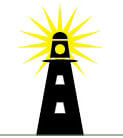How Now Goes the Fed?
For nearly a decade, the Federal Reserve was largely on the sidelines. After reducing interest rates to close to zero in the wake of the Great Recession, they were reduced to less powerful weapons. In this period they adopted “quantitative easing,” where the numbers are big but the effect less clear.
Now the Fed is back. They have repeatedly declared that the economy is sound and it’s time to “remove the punch bowl” before the party gets out of hand. While the U.S. economy is not booming, it’s the strongest it’s been in more than a decade and may well be gaining momentum.
Fed policy takes time to bring about the desired effects so it must act ahead of time and anticipate the future. Even so, the Fed relies on data and trailing information about the economy and so usually operates behind the curve. We ask the Fed to do the impossible — accurately foresee the future — and are disappointed, even hostile, when, as most often is the case, they err.
What are the chances that this tightening cycle will be successful and how will we judge that success? At the same time, the Fed plans to sharply trim its record four trillion dollar balance sheet.
As a conservative institution, as a committee, and as a seer, the Fed operates with challenges and consensus as they try to steer the world’s largest economy on the narrow path of prosperity and avoid a recession.
We are on the verge of the longest expansion in history and the odds of the Fed triggering a recession soon are high. This need not be a disastrous recession and perhaps will be one that markets can shrug off with a short pause.
Nonetheless, the Fed faces difficult challenges as it tries to nurse this economy through a period of sub-par growth while avoiding calamity.

